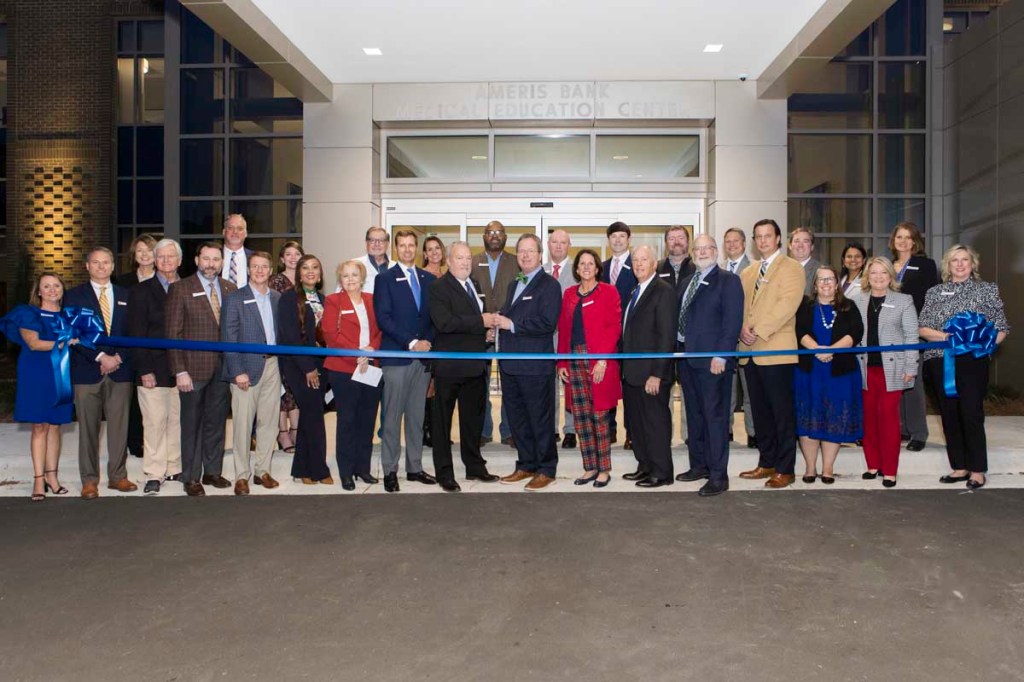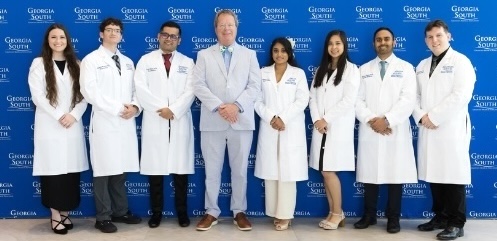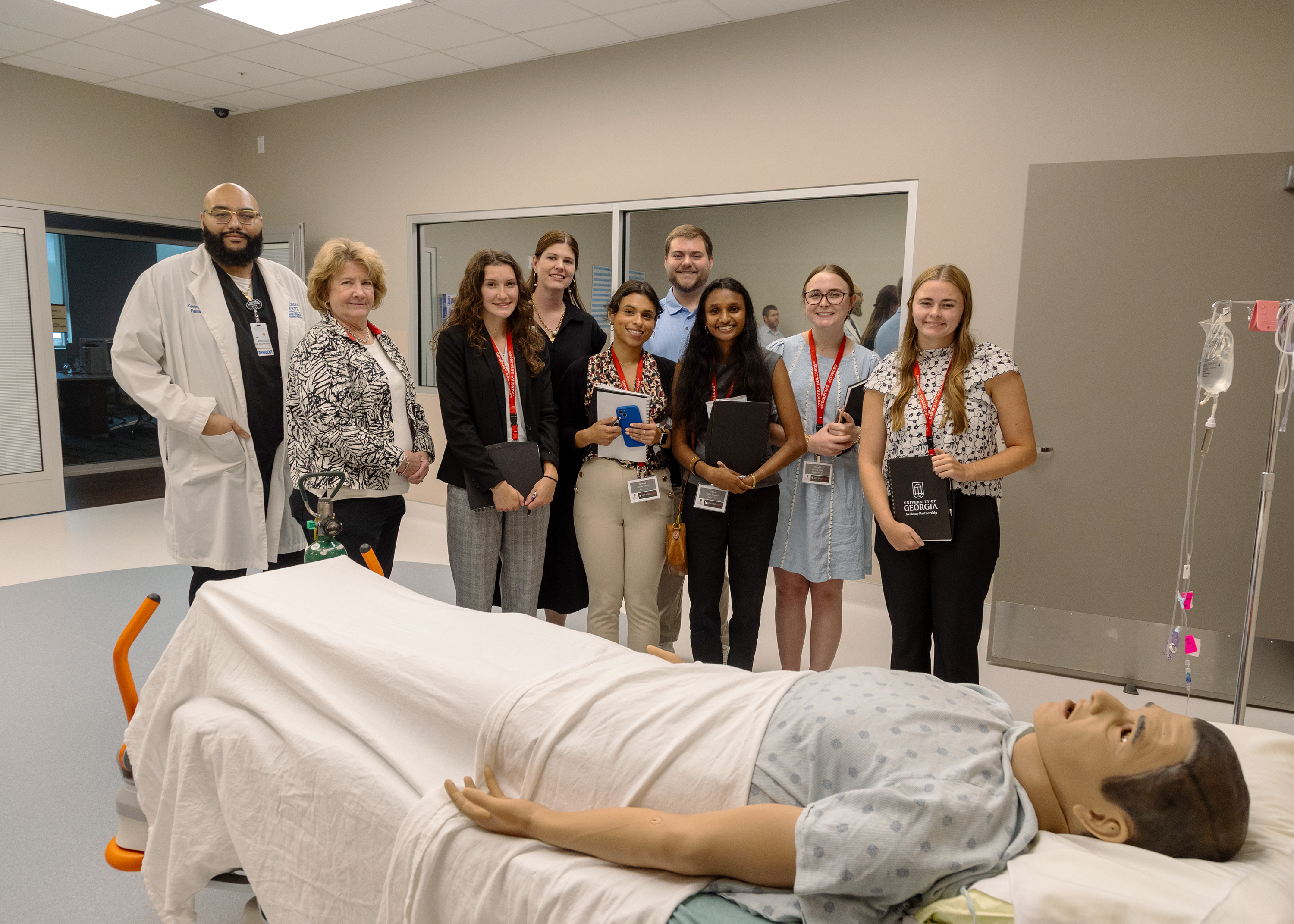QL_Colquitt Regional
Published 5:00 pm Wednesday, February 21, 2024

- Dave Buckridge, market president for Ameris Bank, left, and Colquitt Regional President and CEO Jim Matney cut the ribbon at the new Ameris Bank Medical Education Center.
Colquitt Regional Medical Center continued transforming itself into a teaching hospital in November 2023 with the opening of the Ameris Bank Medical Education Center. The event included demonstrations and tours of the building.
The new, state-of-the-art facility, located on the north side of the Colquitt Regional Medical Center campus, behind the Vereen Rehabilitation Center, is a two-story, 39,000-square-foot space that houses the Colquitt Regional Educational Services department, the Georgia South Family Medicine Residency Program and clinic, the Georgia South Psychiatry Residency Program and offices for physicians, faculty and staff.
“Over the past decade, we have been working towards transforming our hospital into a premier academic medical center,” said Colquitt Regional President and CEO Jim Matney. “From the very first step of adding a family medicine residency, we have made great strides in the field of medical education. The opening of the new Ameris Bank Medical Education Center is a testimony to the years of dedication and commitment we have made to bringing increased training opportunities for healthcare professionals.”
Through the Georgia HEART program, the Georgia Rural Hospital Tax Credit Bill that was passed in 2016 by the General Assembly, Ameris Bank has donated a total of $3 million over six years toward the construction of the building.
During the program, Colquitt Regional Medical Center Foundation Director Nicole Gilbert recognized others who made donations toward the project, which included the Matney Family, the Purohit Family, the hospital volunteers who raised money thought the hospital’s Pink Pearl gift shop and the employees of the hospital who donated through the employee giving program.
After the dedication program, tours of the facility and demonstrations were given with the center’s simulation mannequins to show how the medical students would train in very near to real-life situations.
“When we first started nursing, we didn’t have a low-risk, no-risk scenario. We had to learn hands-on in real-life situations. It was terrifying,” said Jessy Plymel, a home-health and hospice RN who was working with the mannequin.
She went on to say that, with the mannequin, which is capable of giving all the scenarios and situations the medical students might face, they are much more prepared when real-life situations occur and they’re not so fearful.
“That alters everything and your confidence is better and you feel like your care is going to be more precise and on point. So this is almost a priceless situation,” she said.
Plymel and Jackie Rodgers, a diabetes education RN, demonstrated a scenario with the mannequin where the “patient” had hypoglycemia. They assessed the “patient’s” symptoms.
The interactive mannequin, named “Anne,” spoke to them about what she was feeling and exhibited symptoms like sweating, slurred speech and gave them vocal cues like “she didn’t eat her lunch.” In this way, students are able to assess, recognize and treat the mannequin, the ladies said.
Plymel said that they could have both nursing students and medical students train together on the mannequins so that they could learn what it’s like to work together in real-life situations.
Rodgers said that the simulation mannequin could be programmed for a variety of training scenarios ranging from very critical to less critical.
Riley Viohl, simulation operations specialist for the hospital, said that there were 12 simulation mannequins that could be set-up in four labs and run from two control rooms. During a birthing simulation, he controlled the mannequin from a laptop computer in the control room.
“It would be a pre-programmed scenario,” he said of how the training was done and added that he would consult with the facilitator of the training to see what scenario was to be enacted in the programming.
He also said that the mannequin’s program could be changed in the middle of the class, based on the facilitator’s needs for the students participating.
“Something could go wrong. Something could get better,” Viohl said of the mannequin “patient.” “They’re fairly user friendly.”
In his address to the guests during the dedication, Matney told the audience that this was a hospital in an education building because the rooms mirror what is in a hospital.
He said that he believed that the center would be a catalyst for more people to come to this region. He said that when the medical residents came to see the facilities, “How could you not want to come to work at Colquitt County Medical Center?”
“This is a state-of-the-art facility with the latest technology in medical training. It would not have been possible without the generosity of our donors, both personal and those who funnel their tax dollars through the Georgia Heart program, employees, volunteers, and the Hospital Authority of Colquitt County. Not only is this a win for our Colquitt Regional family, but we see this as an opportunity to be a resource for the region,” he said.





